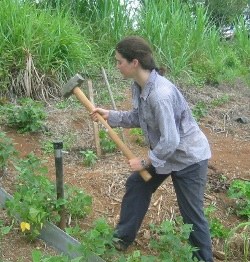
Fig. 2. A sledge hammer is used for pounding in 60-cm soil corers
Removing the corer from the soil is often the most challenging step. We have not found the short rod that is included with the soil coring kit to be very useful. Instead, we use the slide hammer rod since it is longer and easier to pull. Turning the coring apparatus while pulling by hand also seems to help. When using the shorter coring tubes, several other techniques are possible since the removal rod is very close to the soil surface after pounding in the soil corer. On slopes (as that shown in Fig. 2) a long pipe can be placed underneath the removal rod for leverage to help pry the corer out of the ground. We have also successfully also used a car jack (Fig. 3) that is placed underneath the removal rod and greatly reduces strain on the workers obtaining the soil core. Other researchers have reported using a mechanical winch.

Fig. 3. A car jack can be used to pull the soil corer from the soil when using short corers.
The steel soil corer tube may become deformed with use, depending on soil conditions and the number of cores taken. We have often found that with time the plastic liner tube is difficult to remove and requires prying with a small screwdriver and extraction using pliers. Taking soil cores in the rain also makes removing the plastic liners difficult, but is possible when equipment and liner tubes are continually dried with a towel. Pliers can also be useful for inserting the liner tubes if the steel corer tube becomes bent.
To avoid root loss from decomposition, soil cores should be stored at 4 ° C if roots will be cleaned within 1 week, or at -20 for longer term storage. If no refrigeration is available or if DNA will be extracted from the roots, soil cores should be kept cool and shaded and the roots should be cleaned from the cores as soon as possible.

